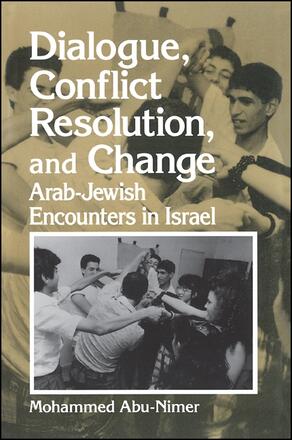
Dialogue, Conflict Resolution, and Change
Arab-Jewish Encounters in Israel
Alternative formats available from:
Explores Arab-Jewish encounters and relations in Israel from both conflict resolution and educational perspectives.
Description
This is the first study to introduce the subject of Arab-Jewish relations and encounters in Israel from both conflict resolution and educational perspectives. Through a critical examination of Arab and Jewish encounter programs in Israel, the book reviews conflict resolution and intergroup theories and processes which are utilized in dealing with ethnic conflicts and offers a detailed presentation of intervention models applied by various encounter programs to promote dialogue, education for peace, and democracy between Arabs and Jews in Israel.
The author investigates how encounter designs and processes can become part of a control system used by the dominant governmental majority's institutes to maintain the status quo and reinforce political taboos. Also discussed are the different conflict perceptions held by Arabs and Jews, the relationship between those perceptions, and both sides' expectations of the encounters. Abu-Nimer explores the impact of the political context (Intifada, Gulf War, and peace process) on the intervention design and process of those encounter groups, and contains a list of recommendations and guidelines to consider when designing and conducting encounters between ethnic groups. He reveals and explains why the Arab and Jewish encounter participants and leaders have different criteria of their encounter's success and failure. The study is also applicable to dialogue and coexistence programs and conflict resolution initiatives in other ethnically divided societies, such as South Africa, Northern Ireland, Bosnia, and Sri Lanka, where the minority and majority have struggled to find peaceful ways to coexist.
Mohammed Abu-Nimer is Assistant Professor at the International Peace and Conflict Resolution Program at the School of International Services at American University.
Reviews
"In his in-depth examination of intervention models in Israel, Abu-Nimer provides a fresh insight into the important role of dialogue in conflict resolution. This comprehensive study will not only serve as a useful guide for future Arab-Israeli dialogues, but also a framework for other citizen diplomacy programs in areas of conflict around the world. " — John W. McDonald, Ambassador, and Chairman and co-founder of the Institute for Multi-Track Diplomacy
"Abu-Nimer critically examines an important aspect of the efforts to improve Jewish and Palestinian relations in Israel. Based on first hand experience and systematic analyses, he explores the pervasive limitations of programs bringing Palestinian and Jewish youth together for controlled educational encounters and dialogue. He locates the groups within a general socio-political context and he gives attention to the diversity of responses of students and staff regarding their experiences in these groups. " — Louis Kriesberg, Syracuse University